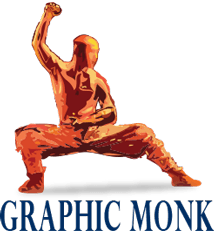22 June 2022
Dunedin, Otago
New Zealand
Virtual Production Dojo in collaboration with Graphic Monk Productions undertook the morphological facial reconstruction of a 9000-year-old Kennewick Man. This study aimed to provide an in-depth look and the possibilities of using emerging technologies in archaeological anthropology and forensic facial and anatomical reconstruction.
The Kennewick Man was chosen as the subject and has garnered significant attention from the Native American and scientific communities globally since its first discovery and unearthing in 1996, one of the oldest remains ever found in North America and most closely related to Native Americans.
The Kennewick man has been the subject of much controversy over two decades with the scientific and Native American communities of the Confederated Tribes of the Colville Reservation. The archaeological finds were locked up in the Burke Museum in Seattle from 1998 to 2017 when the remains were returned to the tribes for proper burial in a private and undisclosed grave according to the traditions of the tribes.

The joint project between Graphic Monk Productions and Virtual Production Dojo aimed to push the boundaries of our research and development of the digital human creation methodologies employed to bring history to life for The Kennewick Man. The technology allowed us to do a full morphological facial and full-body reconstruction within just four hours.
The only opportunity the scientific community and the world have had to peer into his eyes was possible by the clay facial reconstruction created by Jim Chatters and Thomas McClelland and then by Amanda Danning.
After studying the DNA analysis findings and the facial reconstructions of the skull using the American Method as well as the Russian Method of facial reconstruction for race identification and determination, using Character Creator 4 from Reallusion, we set out to recreate the morphological facial and full-body reconstruction of The Kennewick Man in collaboration with the studies and research being done at Virtual Production Dojo and Graphic Monk Productions, overseen by Brigita Biondic, Biologist (BSC).
The image of the skull was further analysed with the final render of the digital human model of The Kennewick Man, resulting in a proper match of the skull and skinned version.


The project looks at a systematic exploration of new and emerging technology and its uses within the field of archaeological and forensic anthropology.
This technology offers an opportunity for the scientific community to work closely with artists to quickly iterate a realistic representation of the subject as a digital human and bring animation data to study the nuances of facial and body movements.
Furthermore, the emerging technologies from Reallusion can be applied to law enforcement and forensic investigations as sometimes, quick responses and iterations prove necessary.
The Kennewick Man, also known as the Ancient One, was curated securely at The Burke Museum from 1998 to 2017, under the contract to the US Army Corps of Engineers, until repatriation. The skeletal remains were returned to the tribes on 17th February 2017, which were reburied in a private ceremony according to the tribal traditions at an undisclosed location.
The Ancient One was never on display for the general public; the only representation to date has been the clay facial reconstruction from James Chatters, Thomas McClelland and Amanda Danning until now, when we bring The Ancient One, The Kennewick Man, to life virtually.
